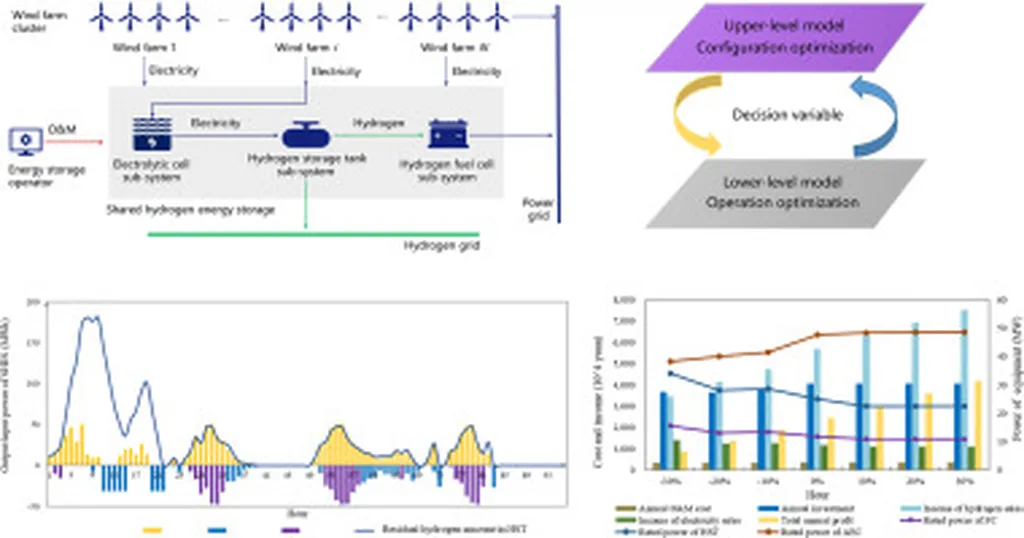In the rapidly evolving energy landscape, a novel approach to optimizing shared energy storage (SES) systems could unlock significant economic benefits for the energy sector. Researchers, led by Heng Hu from Xinjiang University and the Xinjiang Institute of Engineering, have developed a method to configure SES systems that enhances the consumption of new energy within regional multiple micro energy grids (MMEGs). Their work, published in the *International Journal of Electrical Power & Energy Systems*, offers a promising pathway to improve the efficiency and profitability of energy storage investments.
The study addresses a critical challenge in the energy sector: how to integrate large-scale shared energy storage systems into MMEGs to boost the consumption of local new energy. Hu and his team propose an innovative bi-level optimization model that considers both planning and dispatch periods. This model not only optimizes the configuration of SES systems but also enhances the economic consumption of new energy.
“Our method provides a scientific and rational approach to configuring SES systems with a moderate investment scale,” Hu explained. “By analyzing the profitability mechanisms under economic consumption indices, we can significantly reduce operational costs and shorten the payback period for SES operators.”
The research focuses on combined cooling, heating, and power micro energy grid clusters (CCHP-MEGCs). The bi-level optimization model includes an upper-layer model that addresses SES station configuration during the planning period and a lower-layer model that solves economic consumption rate and optimization operation problems during the dispatch period. This dual-layer approach ensures that the SES system is both economically viable and operationally efficient.
One of the key findings of the study is that implementing a moderate power curtailment rate can effectively reduce the required configuration capacity of the SES system and the operational costs of the CCHP-MEGC system. This approach not only benefits SES operators by shortening their payback period but also enhances the overall economic consumption of new energy.
“The optimal power and capacity of the SES serving multi-energy systems should strive to match the optimal new energy consumption targets,” Hu noted. “This alignment can facilitate mutually beneficial outcomes for all participating entities.”
The implications of this research are far-reaching. As the energy sector continues to transition towards renewable energy sources, the need for efficient and economically viable energy storage solutions becomes increasingly critical. Hu’s method offers a practical framework for optimizing SES systems, which can be applied to various micro energy grids, enhancing their economic performance and sustainability.
This study not only validates the economic viability and effectiveness of the proposed configuration method but also explores the impact of the new energy consumption rate on SES configuration results. By providing a clear path to optimizing SES systems, the research paves the way for more efficient and profitable energy storage solutions, ultimately benefiting the entire energy sector.
As the energy landscape continues to evolve, the insights from this research could shape future developments in energy storage and consumption, driving the sector towards a more sustainable and economically robust future.

